2007 年江西财经大学综合英语考研真题
Part I Exam in the society and culture of major English–speaking countries
I. Fill in the blanks. (0.5’X30 = 15’)
1. The doctrine of the “divine right of kings” held that the sovereign derived
his authority
from ______ , not from _____________.
2. The UK is divided into ________ constituencies with each of them represented by
a
member in ____________.
3. In the 5th century AD it is said a great leader__________ appeared, united the
British, and
with his magical sword, ___________, drove the Saxons back.
4. New Zealand is keen to take environmental responsibility. New Zealand was declared
____________. There are no __________________ in New Zealand.
5. The largest school in New Zealand is the _________________, which provides
__________________ for students who live in isolated places or who cannot attend
school for
medical or other reasons.
6. In 1829 Ellen Turner published his proposals for the development of the colonies
of
Australia. His proposals is called __________________________ in order to avoid a
basic
problem of “__________________”.
7. ________________________ television channel began broadcasting in 1980. It
currently broadcasts in _________________ and provides a variety of programs in
English
that cover a much wider field of overseas stories than other channels.
8. The Supreme Court has the function of determining Congressional legislative or
executive action that violates ______________________. This power is called
______________________ .
9. Canada ‘s political system was greatly influenced by the two major forces:
___________ and ________ .
10. Aid became an important component of Canadian foreign policy, and both Pearson
and
Trudeau pressed hard for international organization like __________________ and
______________________ to make humanitarian development assistance the priority of
aid
programs.
11. Canada’s motto is the country stretches “_______________”, with the Pacific
Ocean on
the west coast and ___________________ on the east coast.
�
12. The two of the taxes: _______________ and _____________ were imposed on North
American colonies by the British government on the eve of the American Revolution.
13. One advantage of corporation over sole proprietorship and partnership is that
it has
______________, so investor risked only the amount of their investment and not their
entire
assets.
14. Freedom of religious belief or non-belief is provided in the
______________________
in the US constitution.
15. Under President Franklin Roosevelt’s “_____________” , Democrats set up
government
programs that provided paid employment for people building dams and public
buildings.
16. Today the Irish educational system is among the _________ and best in Europe.
17. __________is played by holding the airbag under the arm and pumping it with the
elbow.
18. About 25% of all schools of higher education in America are privately operated
by
_____________.
II. State what you have known about the following in your own words.( 3’X5 = 15’)
1. Independent schools
2. the Elite Theory of Power
3. the Puritanism
4. the Bush Doctrine
5. the Canadian Mosaic
Part Two Exam in basic English
Choice of Words
Choosethecorrectwordfromthesynonymsgiveninthebrackets,changingtheform
of the choices when necessary. (1 x10=10 )
1.They started the business together, but after a couple of years their relationship
became
(questionable, problematical) so they had to part company.
2. Away from the madding crowd, many city-dwellers spend their weekends in the
countryside to
enjoy (peace, tranquility).
3. He (grabbed, grasped) the rope with both hands and pulled it with all his strength.
4. It is an excellent plan, but it would be very difficult to (execute, perform)
it with our limited
funds.
5. In spite of his weakness his (rugged, dogged) determination helped him to win
the race.
6. Unaware of the truth, thousands of people gathered there, (clamoring, glamorizing)
for legal
�
recognition of their organization.
7. (Accusation, condemnation) of the bombing the embassy went swiftly across the
country.
8. Even if you (mix, blend) oil and water, they will not (mix, blend).
9. Deep at night, they could still hear gun-fire (rambling, rumbling) in the
distance.
10. Obviously they were getting nowhere with the meeting, so he decided to (desist,
resist) from
making a final decision that afternoon.
your answer sheet. One word or expression for each blank only. (2 x10=20 )
The world is very different now. For man holds in his _1__ hands the power to __2_
all
forms of human poverty and all forms of human life. And yet the same revolutionary
beliefs for
which our forebears fought are still _3__ around the globe--the belief that the
rights of man
come not from the generosity of the state, but from the hand of God.
We dare not forget today that we are the ___4 of that first revolution. Let the word
go forth from
this time and place, to friend and foe alike, that the torch has been passed to a
new generation of
Americans--born in this century, __5_ by war, disciplined by a hard and bitter peace,
proud of
our ancient heritage--and unwilling to witness or permit the slow undoing of those
human rights to
which this Nation has always been committed, and to which we are committed today
at home and
around the world.
This much we pledge--and more.
To those old allies whose cultural and spiritual origins we share, we pledge the___6
of faithful
friends. United, there is little we cannot do in a host of cooperative ventures.
Divided, there is
little we can do--for we dare not meet a powerful challenge _7__ and split __8_
Finally, to those nations who would make themselves our__9_ , we offer not a pledge
but a
request: that both sides begin anew the quest for peace, before the dark powers of
destruction _10_
by science engulf all humanity in planned or accidental self-destruction.
A at issue B pledge C unleashed D farthest
E exploitation F adversary G reduction H warfare,
I asunder J mortal K torch L at odds
M previous N tempered O images P emergence
Q abolish R heirs S ride T loyalty
�
t
Reading Comprehension (2 x10=20)
Sign has become a scientific hot button. Only in the past 20 years have specialists
in language
study realized that signed languages are unique - a speech of the hand. They offer
a new way to
probe how the brain generates and understands language, and throw new light on an
old scientific
controversy: whether language, complete with grammar, is something that we are born
with, or
whether it is a learned behavior. The current interest in sign language has roots
in the pioneering
work of one rebel teacher at Gallaudet University in Washington, D.C., the world’
s only liberal
arts university for deaf people.
When Bill Stokoe went to Gallaudet to teach English, the school enrolled him in a
course in
signing. But Stokoe noticed something odd: among themselves, students signed
differently from
his classroom teacher. Stokoe had been taught a sort of gestural code, each movement
of the hands
representing a word in English. At the time, American Sign Language (ASL) was thought
to be no
more than a form of pidgin English. But Stokoe believed the "hand talk" his students
used looked
richer. He wondered: Might deaf people actually have a genuine language?
And could that language be unlike any other on Earth? It was 1955, when even deaf
people
dismissed their signing as "substandard". Stokoe’s idea was academic heresy. It
is 37 years later.
Stokoe - now devoting his time to writing and editing books and journals and to
producing video
materials on ASL and the deaf culture - is having lunch at a cafe near the Gallaudet
campus and
explaining how he started a revolution. For decades educators fought his idea that
signed
languages are natural languages like English, French and Japanese. They assumed
language must
be based on speech, the modulation of sound. But sign language is based on the
movement of
hands, the modulation of space. "What I said," Stokoe explains, "is that language
is not mouth
stuff- it’s brain stuff."
The study of sign language is thought to be
�
A) an approach to simplifying the grammatical structure of a language.
B) an attempt to clarify misunderstanding about the origin of language.
C) a challenge to traditional views on the nature of language.
D) a new way to took at the learning of language.
2. The present growing interest in sign language was stimulated by
A) a leading specialist in the study of liberal arts.
B) an English teacher in a university for the deaf.
C) Some senior experts in American Sign Language.
D) a famous Scholar in the study of the human brain.
3. According to Stokoe, sign language is
A) an international language.
B) a substandard language.
C) an artificial language.
D) a genuine language.
4. Most educators objected to Stokoe’s idea because they thought
A) a language should be easy to use and understand.
B) sign language was too artificial to be widely accepted.
C) a language could only exist in the form of speech sounds.
D) sign language was not extensively used even by deaf people.
5. Stokoe’s argument is based on his belief that
A) language is a product of the brain.
B) language is a system of meaningful codes.
C) sign language is derived from natural language.
D) sign language is as efficient as any other language.
The ideal companion machine-the computer- would not only look, feel, and sound
friendly but
would also be programmed to behave in a pleasant manner. Those qualities that make
interaction
comfortable, and yet the machine would remain slightly unpredictable and therefore
interesting. In
its first encounter it might be somewhat hesitant, but as it came to know the user
it would progress
to a more relaxed and intimate style. The machine would not be a passive participant
but would
add its own suggestions, information, and opinions; it would sometimes take the
initiative in
developing or changing the topic and would have a personality of its own.
Friendships are not made in a day, and the computer would be more acceptable as a
friend if it
imitated the gradual changes that occur when one person is getting to know another.
At an
appropriate time it might also express the kind of affection that stimulates
attachment and
�
intimacy. The whole process would be accomplished in a subtle way to avoid giving
an
impression of over-familiarity that would be likely to produce irritation. After
experiencing a
wealth of powerful, well-timed friendship indicators, the use
r would be very likely to accept the
computer as far more than a machine and might well come to regard it as a friend.
An artificial relationship of this type would provide many of the benefits that could
continue from
previous discussions. It would have a familiarity with the user’s life as revealed
in earlier contact,
and it would be understanding and good-humored. The computer’s own personality would
be
lively and impressive, and it would develop in response to that of the user. With
features such as
these, the machine might indeed become a very attractive social partner.
6. Which of the following is not a feature of the ideal companion machine?
A) active in communication
B) attractive in personality.
C)enjoyable in performance
D)unpredictable in behaviour
7. The computer would develop friendships with humans in a (n) ---------way.
A)quick
B) unpredictable
C) productive
D) inconspicuous
8. Which of the following aspects is not mentioned when the passage discusses the
benefits of
artificial relationships?
A) Being able to pick up an interesting conversation.
B) Being sensitive to earlier contact.
C) Being ready to learn about the person's life.
D) Having a pleasant and adaptable personality.
9. Throughout the passage, the author is _____in his attitude toward the computer.
A) favorable
B) critical
C) vague
D) hesitant
10. Which might be the most appropriate title of the passage?
A) Artificial relationships
B) How to form intimate relationships
C)The affectionate machine
D) Humans and computers
�
Error correction (1 x10=10 )
The hunter-gatherer tribes that today live as our prehistoric 1.___
human ancestors consume primarily a vegetable diet supplementing 2.___
with animal foods. An analysis of 58 societies of modem hunter
gatherers, including the Kung of southern Africa, revealed that one
half emphasize gathering plant foods, one-third concentrate on
fishing and only one-sixth are primarily hunters. Overall, two-thirds
and more of the hunter-gatherer’s calories come from plants. 3.___
London, showed that gathering is a more productive source of food
than is hunting. An hour of hunting yields in average about 100 4.___
edible calories, as an hour of gathering produces 240. 5.___
Plant foods provide for 60 percent to 80 percent of the Kung 6.___
diet, and no one goes hungry when the hunt fails. Interestingly, if
they escape fatal infections or accidents, these contemporary
aborigines live to old ages despite of the absence of medical care. 7.___
They experience no obesity, no middle-aged spread, little dental
decay, no high blood pressure, on heart disease, and their blood
cholesterol levels are very low( about half of the average American 8.___
adult), if no one is suggesting what we return to an aboriginal life 9.___
style, we certainly could use their eating habits as a model for 10.___
healthier diet.
Translation
1. Translate the following passages into Chinese. (20 )
The distance being considerable, I started early on the 3
rd, crossed the broad Delaware River,
where blocks of ice bumped and crackled around us, and saw the flat shores of New
Jersey
expanding in front, raked by the broad morning light. I was put ashore in a crude
and apparently
uninhabited village, grim with concentrated ugliness that only an American township
in the depth
of winter can display. Nobody to ask the way, or next to nobody. I wandered aimlessly
about, and
was just ready to give all possessed to be back again in New York, when I discovered
that I was
opposite No. 328 Mickle Street, and that on a minute brass plate was engraved “W.
Whitman”. I
knocked at this dreary little two-storey tenement house, and wondered what was going
to happen.
A melancholy woman opened the door; it was too late now to go away. But before I
could speak, a
�
large figure, hobbling down the stairs, called out in a cheery voice, “Is that my
friend?” Suddenly,
by I know not what magnetic charm, all wire-drawn literary reservations faded out
of being, and
one’s only sensation was of gratified satisfaction as being the “friend” of this
very nice old
gentleman.
�
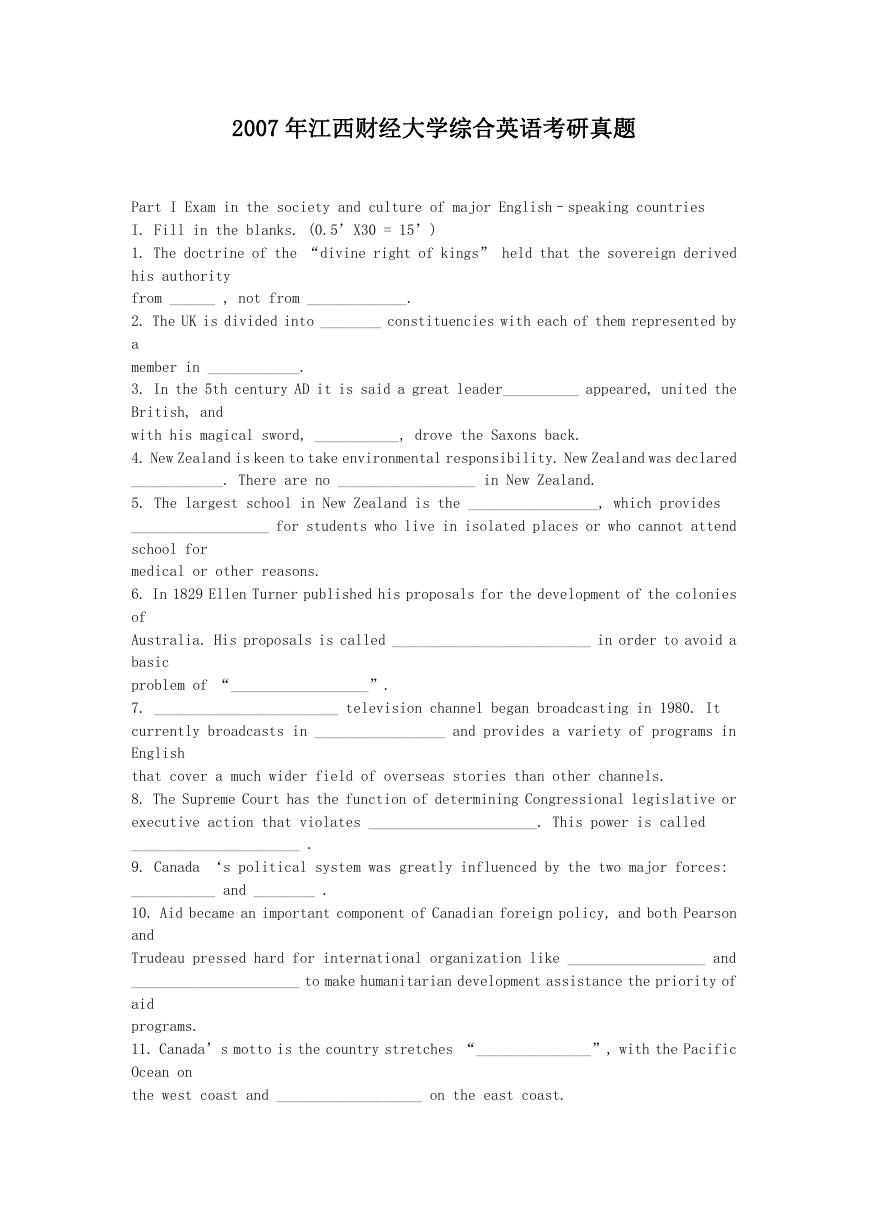
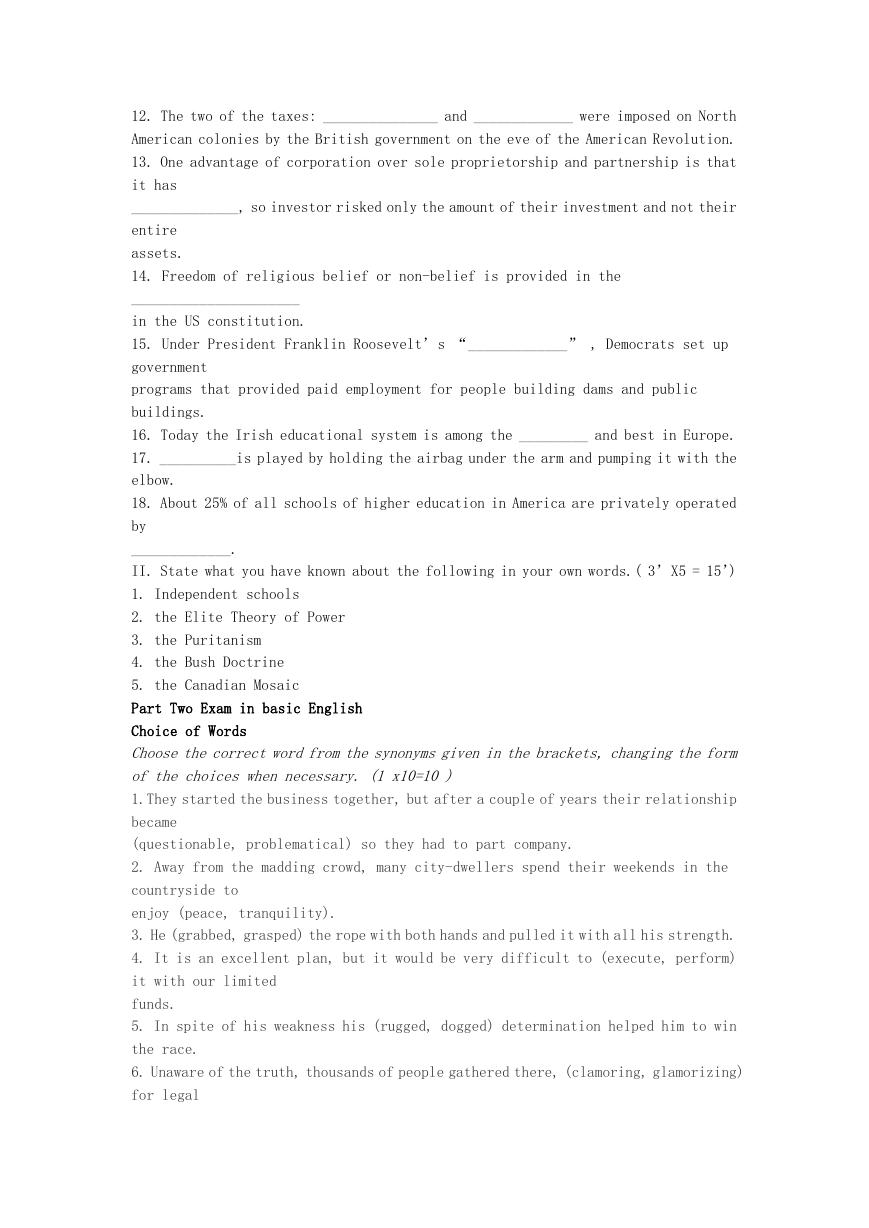
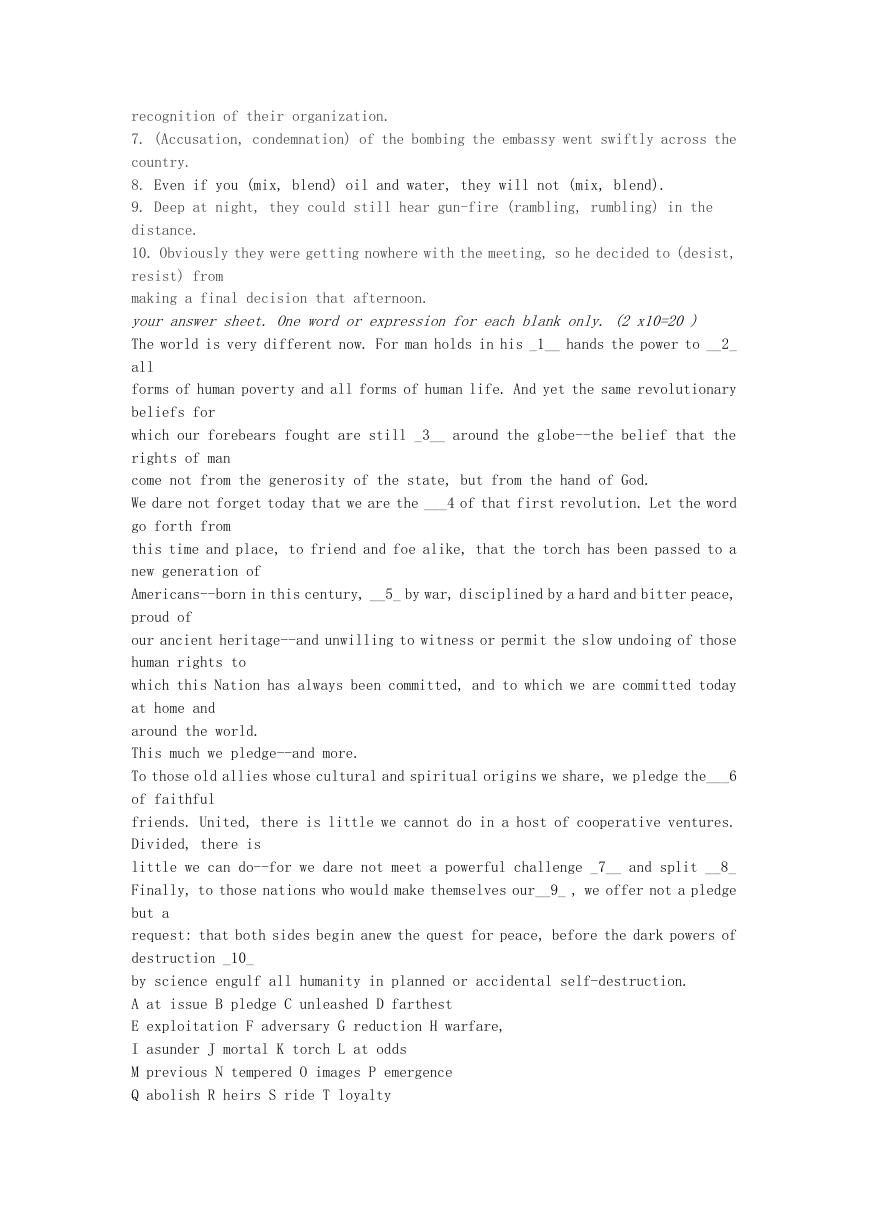
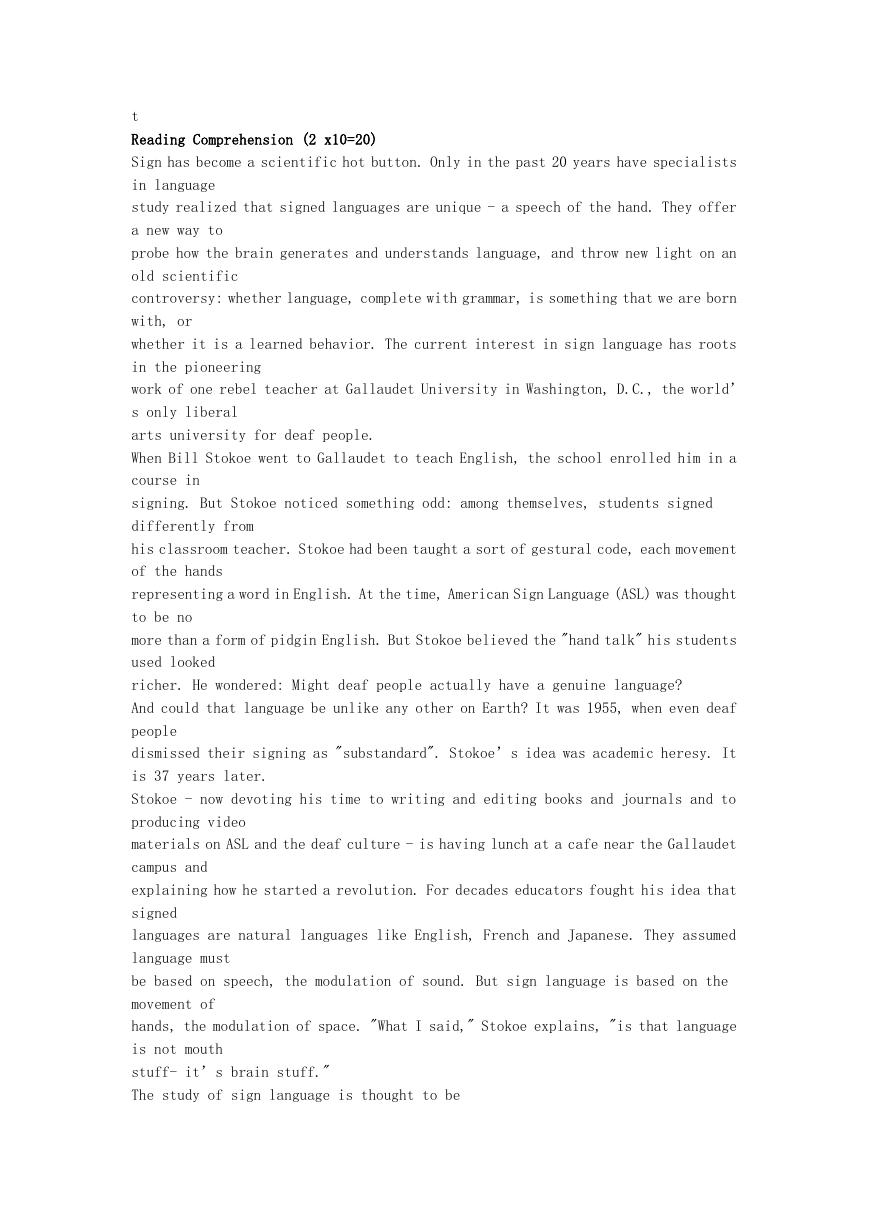
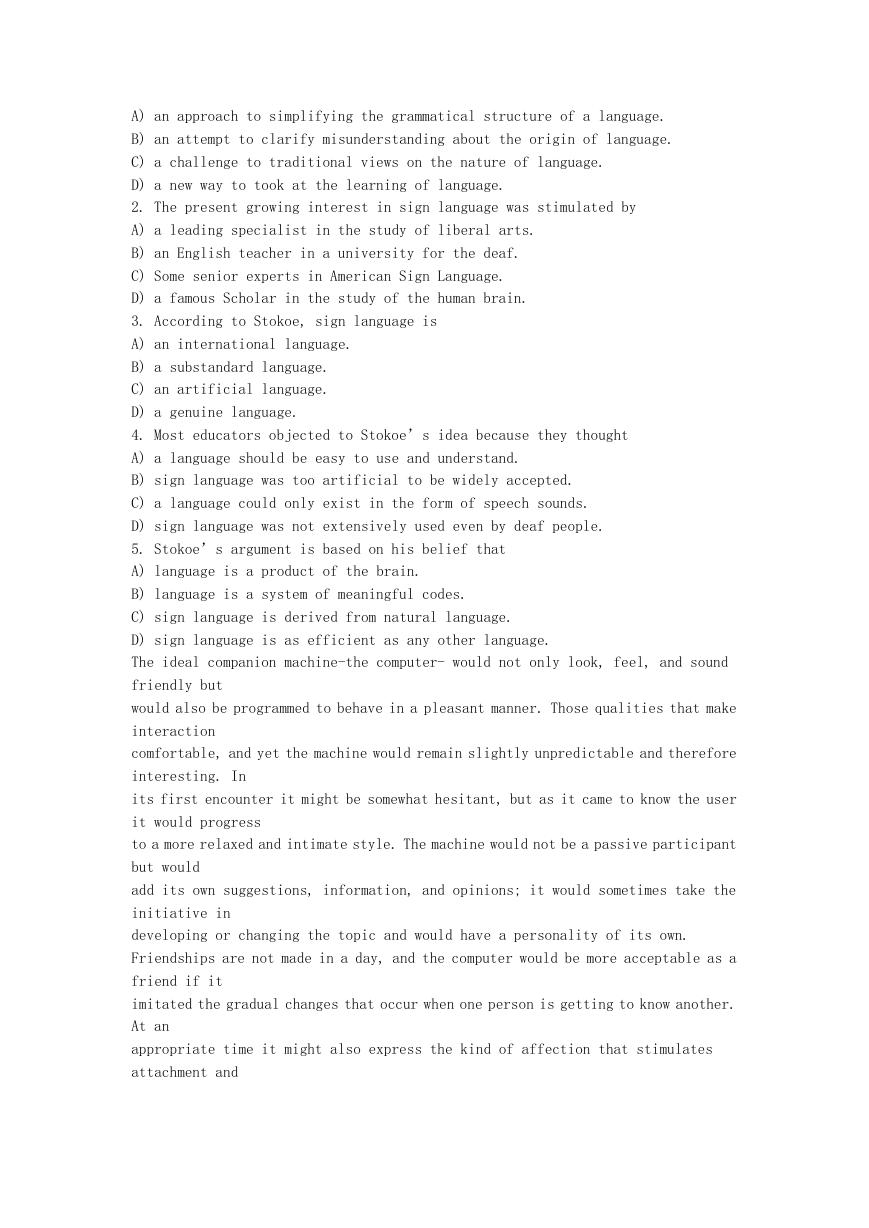

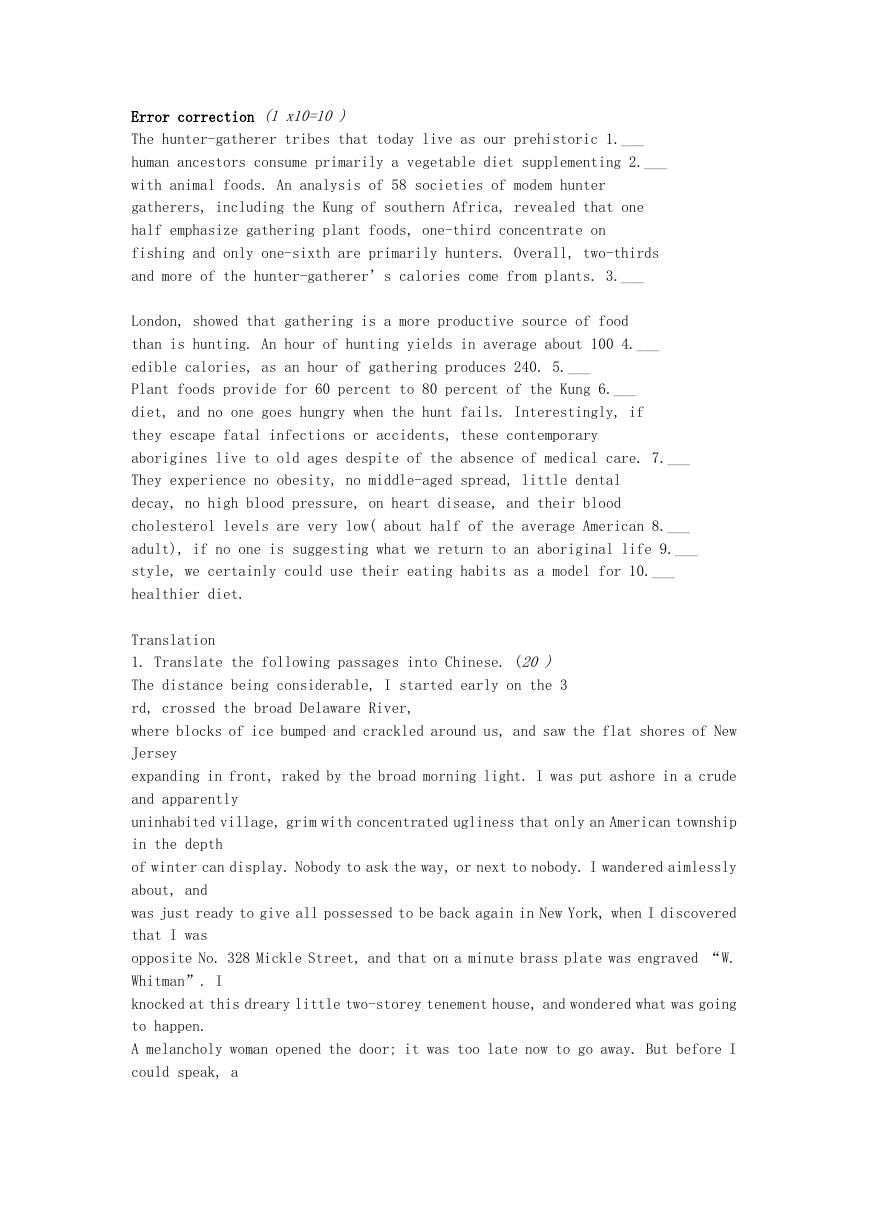
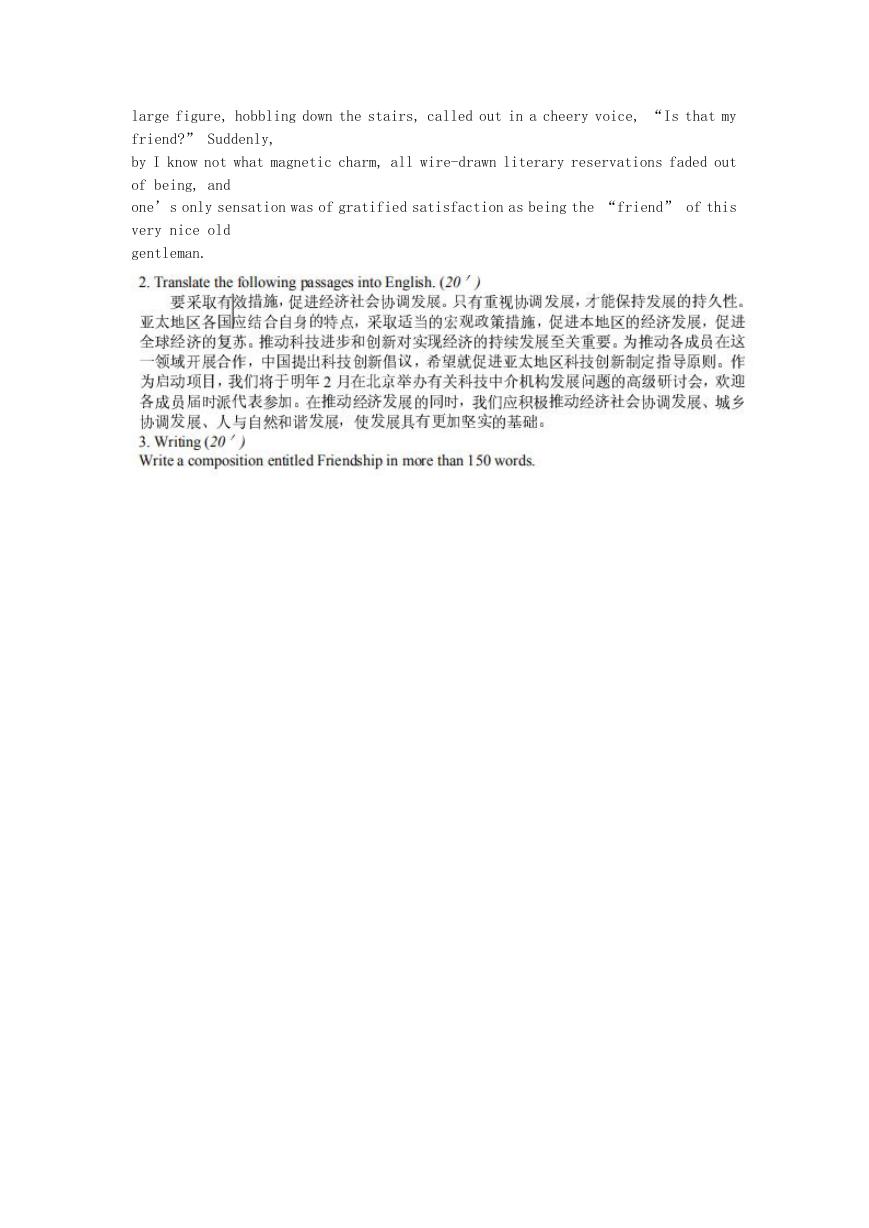








 2023年江西萍乡中考道德与法治真题及答案.doc
2023年江西萍乡中考道德与法治真题及答案.doc 2012年重庆南川中考生物真题及答案.doc
2012年重庆南川中考生物真题及答案.doc 2013年江西师范大学地理学综合及文艺理论基础考研真题.doc
2013年江西师范大学地理学综合及文艺理论基础考研真题.doc 2020年四川甘孜小升初语文真题及答案I卷.doc
2020年四川甘孜小升初语文真题及答案I卷.doc 2020年注册岩土工程师专业基础考试真题及答案.doc
2020年注册岩土工程师专业基础考试真题及答案.doc 2023-2024学年福建省厦门市九年级上学期数学月考试题及答案.doc
2023-2024学年福建省厦门市九年级上学期数学月考试题及答案.doc 2021-2022学年辽宁省沈阳市大东区九年级上学期语文期末试题及答案.doc
2021-2022学年辽宁省沈阳市大东区九年级上学期语文期末试题及答案.doc 2022-2023学年北京东城区初三第一学期物理期末试卷及答案.doc
2022-2023学年北京东城区初三第一学期物理期末试卷及答案.doc 2018上半年江西教师资格初中地理学科知识与教学能力真题及答案.doc
2018上半年江西教师资格初中地理学科知识与教学能力真题及答案.doc 2012年河北国家公务员申论考试真题及答案-省级.doc
2012年河北国家公务员申论考试真题及答案-省级.doc 2020-2021学年江苏省扬州市江都区邵樊片九年级上学期数学第一次质量检测试题及答案.doc
2020-2021学年江苏省扬州市江都区邵樊片九年级上学期数学第一次质量检测试题及答案.doc 2022下半年黑龙江教师资格证中学综合素质真题及答案.doc
2022下半年黑龙江教师资格证中学综合素质真题及答案.doc